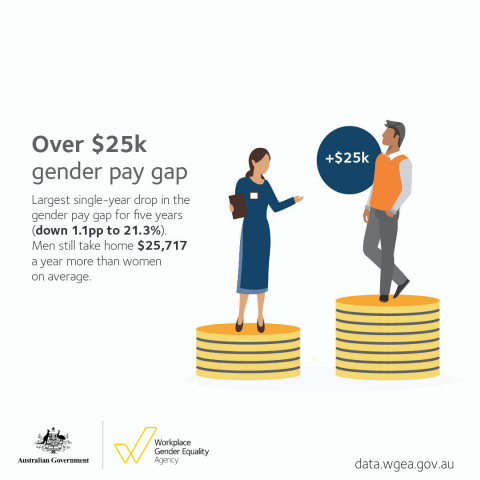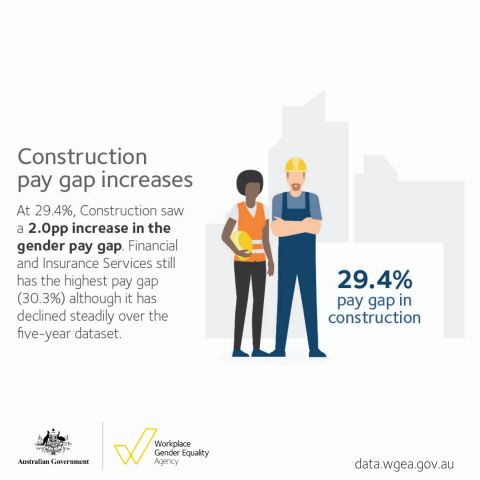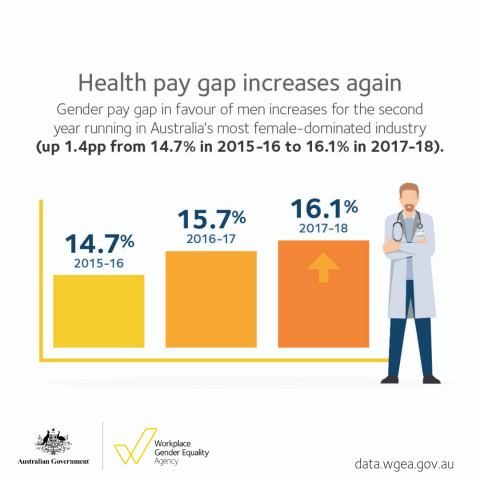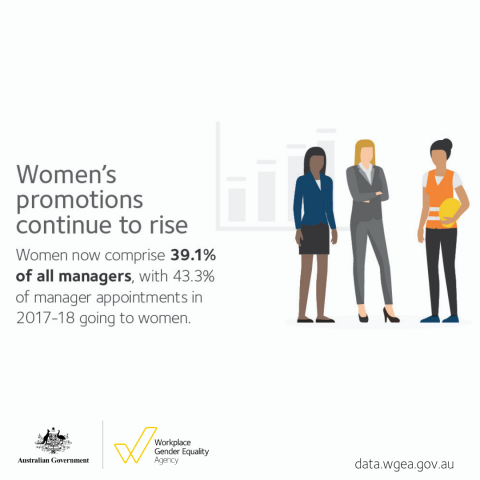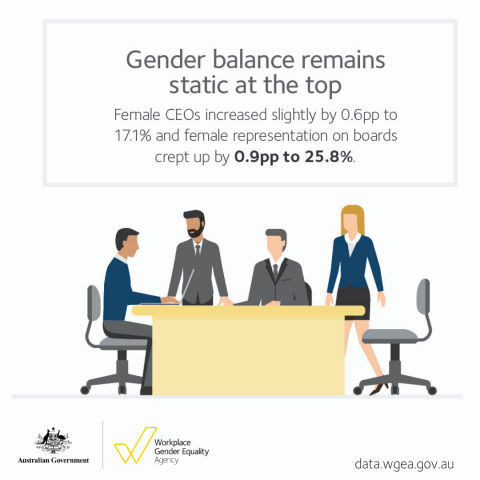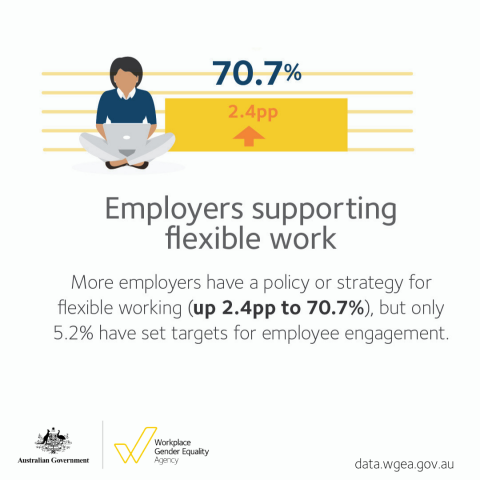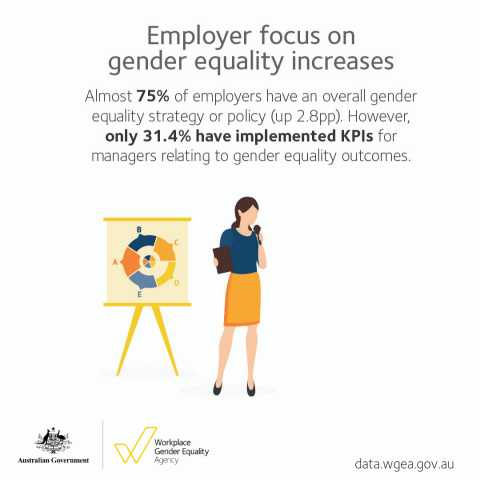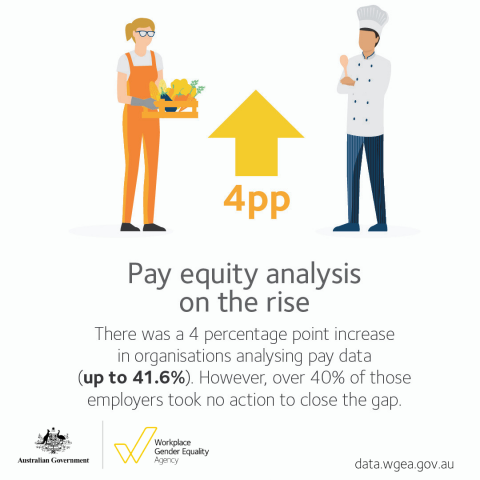- Strong growth in employer action on gender equality over five years
- Gender pay gap has declined but men earn 21.3% more than women, on average
- Steady increase in women in management and leadership roles
The Workplace Gender Equality Agency (WGEA) today released today which shows that over the last five years, employer action is improving workplace gender equality. The Agency’s Director, Libby Lyons, is launching the 2017-18 WGEA data at the National Press Club in Canberra today.
The WGEA data records a steady increase in the number of women in management roles and strong growth in employer action in areas such as overall gender equality policies and strategies, pay equity and flexible work.
The gender pay gap has declined every year and this year has seen the biggest single-year drop (down 1.1pp) in the average full-time total remuneration gender pay gap.
However, the data confirms that we still have a long way to go. There are pay gaps favouring men in every industry and occupation and women earn, on average, just 79% of men’s full-time total remuneration salaries.
The five-year data trends also show virtually no movement in gender segregation across Australian industries and little improvement in either access to paid parental leave or the representation of women at CEO level or on boards.
Ms Lyons said the Agency’s dataset shows that employer action has delivered real outcomes but that women still face considerable barriers in Australia’s workplaces.
“The five years of data collection demonstrates the value of measuring workplace gender equality. We have clear evidence that employer action delivers real results and we should recognise the great work many employers have done in addressing issues such as pay equity. As employers have taken action, the gender pay gap has declined and gender equality outcomes for women and men across Australia have improved.
“Another positive result is that women have increased their presence in management over the past five years. Women now comprise almost 40% of the managers in our dataset and almost a third of key management personnel, which is just under the CEO level, are now women.
“However, our data also highlights areas for improvement. Although the gender pay gap has narrowed every year, progress is too slow. Access to parental leave has not improved, with the provision of paid primary carer’s leave actually going backwards. The glass walls persist in industry segregation, which remains deeply entrenched in Australia. The glass ceiling is still a barrier for women at the CEO and board levels.
“The first five years of data shows where we are seeing positive change and where we need to make more effort. We now need even more employers to take action so that we can accelerate the momentum for gender equality in Australian workplaces,” said Ms Lyons.
Note to media: data graphics and video are available on request.
Visit the WGEA Data Explorer
WGEA 5 Year Data Comparison (PDF, 191.25 KB)
This document covers the biggest outcomes over five years of workplace gender equality data.
